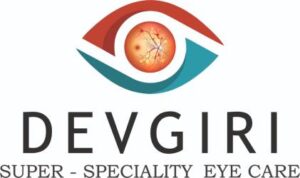What is strabismus?
Strabismus is the medical term of a squint, a condition where the eyes point in different directions. One eye may turn inwards, outwards, upwards or downwards while the other eye looks forward.
Squints are common and affect about one in 20 children. They usually develop before a child is five years old, but can appear later, and adults can also be treated for the condition.
How squints affect vision?

The most obvious sign of a squint is eyes that look in different directions. Squints can also cause: double vision; lazy eye(amblyopia) in young children where the vision is poor in the eye with the squint; and a squint can cause people to develop an abnormal position of the head.
If a squint is left untreated in young children, lazy eye (amblyopia) can develop. The vision in the affected eye gradually deteriorates because the brain ignores the weaker message being sent from that eye. A lazy eye can be treated up until about six or seven years of age, but it is important that it is treated as soon as possible.
Types of squint and what causes them?
Most often, one eye turns inwards (convergent squint) or outwards (divergent squint). Less often, it may turn up or down (vertical squint). There are different terms for how often the squint is present. If they are there at all times they are termed constant, or if they are only apparent at certain times they are know as intermittent.
Some babies are born with a squint (known as a congenital or infantile squint) and some children develop a squint later (known as a acquired squint). Acquired squints may be caused by the eye attempting to overcome a vision problem, such as short sightedness or long sightedness and genetic factors play a part in many squints, but in many cases the cause is unknown. Rarely, a squint may be caused by a condition in the eye itself.
Treatments for squints
Most squints in children need to be assessed as soon as possible to ensure the vision is protected and to improve the chances of successful treatment.
Treatments include glasses and, occasionally, eye exercises. If your child has a lazy eye, they may need to wear an eye patch to improve the vision in the affected eye. Many patients may only need the condition monitoring reqularly.
In some cases, corrective surgery may be undertaken, most commonly to improve the appearance of the eyes, but sometimes to correct double vision or, in young children, to try and develop the co-ordination of the two eyes to work together for 3-D (depth) vision. Occasionally, surgery is done to improve an abnormal position of the head.
Squint surgery is a very common eye operation. It usually involves tightening or moving one or more of the outside eye muscles which move the eye to change the eye position. These muscles are attached quite close to the front of the eye under the conjunctiva, the clear surface layer. The eye is never taken out of the socket during surgery. Stitches are used to attach the muscles in their new positions.
Squint surgery is nearly always a day-case procedure, so you should be in and out of hospital on the same day. There are two kinds of squint operation – adjustable and non-adjustable. In adjustable surgery, which can be performed in older children and adults, the stitches can be adjusted shortly after the surgery, when the patient is awake.
Risks from surgery are rare, but there can be unpredictability in the exact position of the eyes after surgery and sometimes more than one operation will be needed.
Occasionally, squints corrected during childhood reappear in adulthood. You should visit your GP as soon as possible if you develop a new squint.
How To Reach Us?
Dr. Nilesh Giri is a trusted Eye Specialist in PCMC, Pune. At Devgiri Memorial Hospital you will get all the necessary medical treatment. Our advanced approach for our patient treatments make us unique.
The appointment process at Devgiri Memorial Hospital PCMC Pune is very simple. You can directly call on 09657002695. Also with the help of the “Book an Appointment” Form you can book your appointment by just filling in the basic information. We will contact you via email or phone call to confirm your appointment.



